Shae and I had been looking forward to visiting Montana on our 50 state road trip for years, with one of the main things we were looking forward to being Glacier National Park.
One of the most popular activities at Glacier National Park is driving the Going-to-the-Sun Road, a scenic drive that takes you up into the mountains, providing some stunning views. In fact, it’s so popular that the park has to restrict entry to the road from late May to early September, with a limited number of timed tickets being issued for each day.
We’d thankfully learned about the timed ticket requirement and so reserved our ticket months ahead of time (you can do that here). On August 22, we made our way to Glacier National Park from where we were staying in Whitefish and continued through to the start of the Going-to-the-Sun Road.
When entering from the west side of the park, almost as soon as start making your way along this ~50 mile scenic drive you’ll find yourself alongside Lake McDonald. There are several pull-offs, so it’s worth taking advantage of those and heading down to the water.

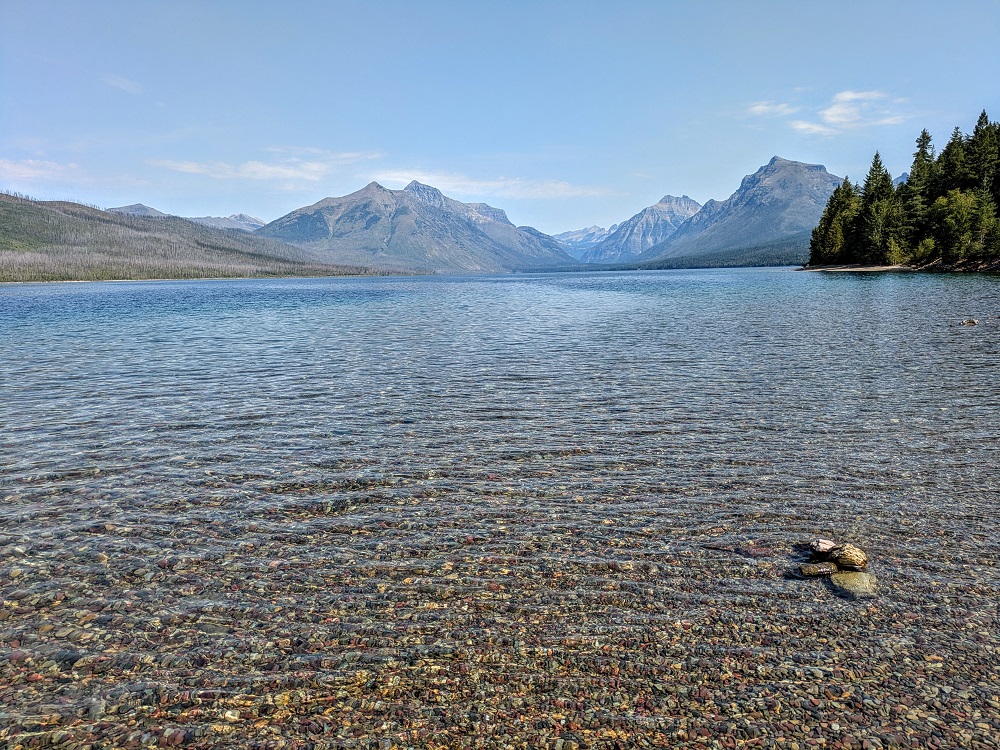
Glacier National Park is so named because of the presence of numerous glaciers. Once upon a time there were ~150 glaciers, but there are now only 25 remaining. One of the now-gone glaciers is what helped form Lake McDonald.
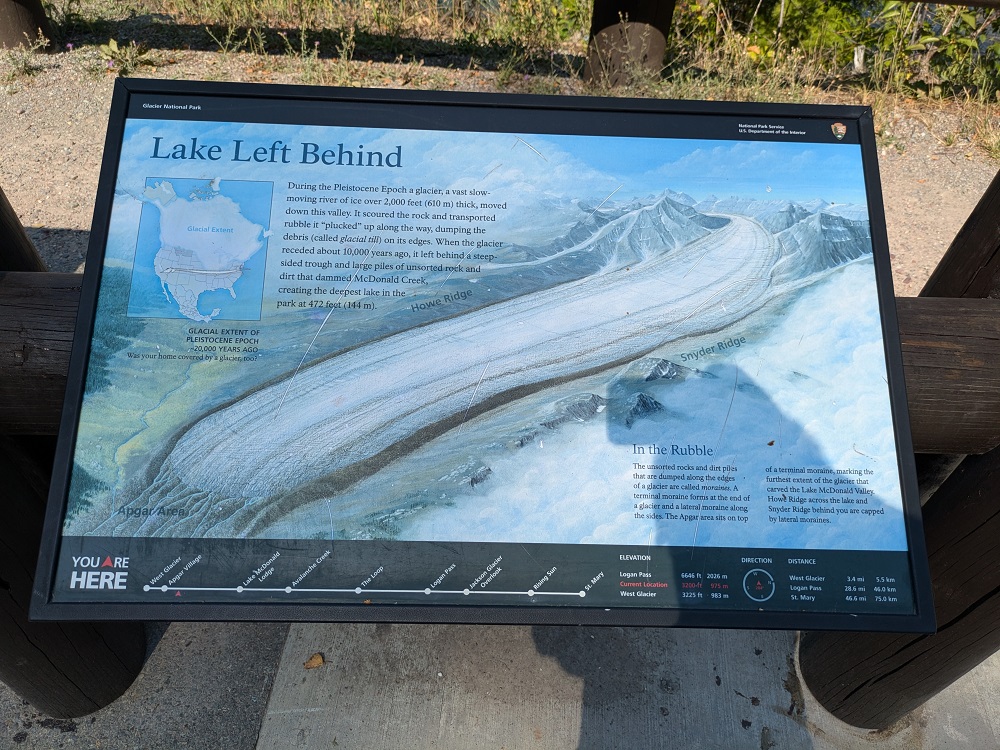
If you’ve ever seen photos of Glacier National Park online, there’s a good chance that at least some of those photos were of the colorful stones that can be found in Lake McDonald. It seems like some people Photoshop their images too much which creates unrealistic photos of colors that simply aren’t there, which in turn can create unrealistic expectations as to what it’ll look like when you visit. Still, the rocks in the lake are more colorful than average:
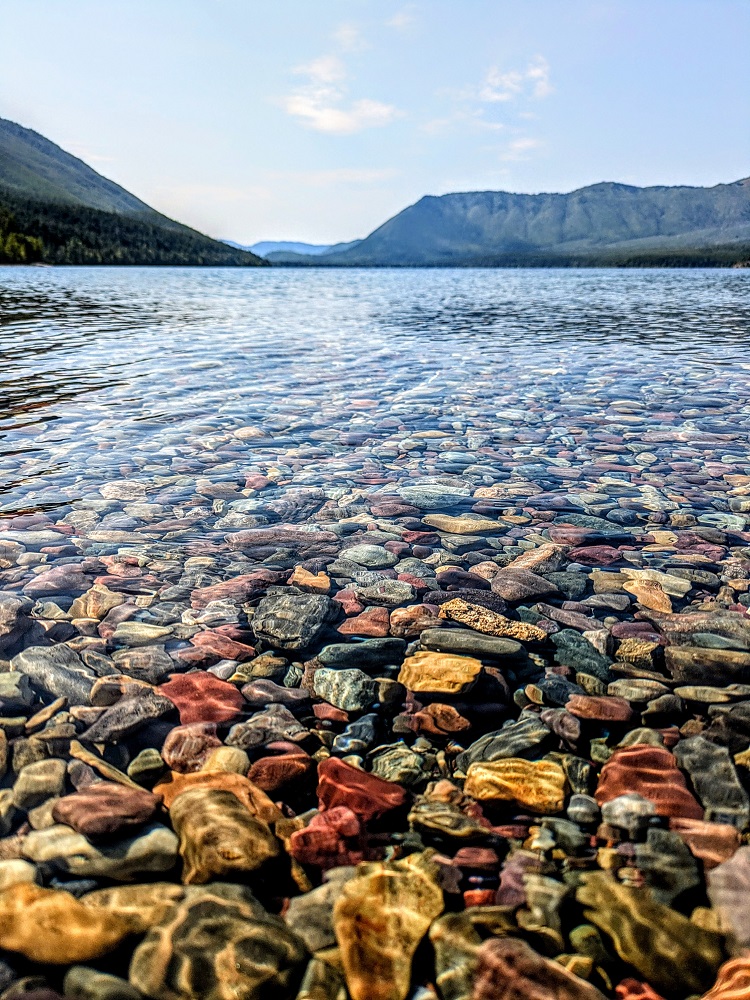
It’s the water (which is crystal clear) that assists in the vibrancy of the colored rocks. Along the shore it was interesting seeing the much duller coloring of the dry rocks versus those right next to them in the water.
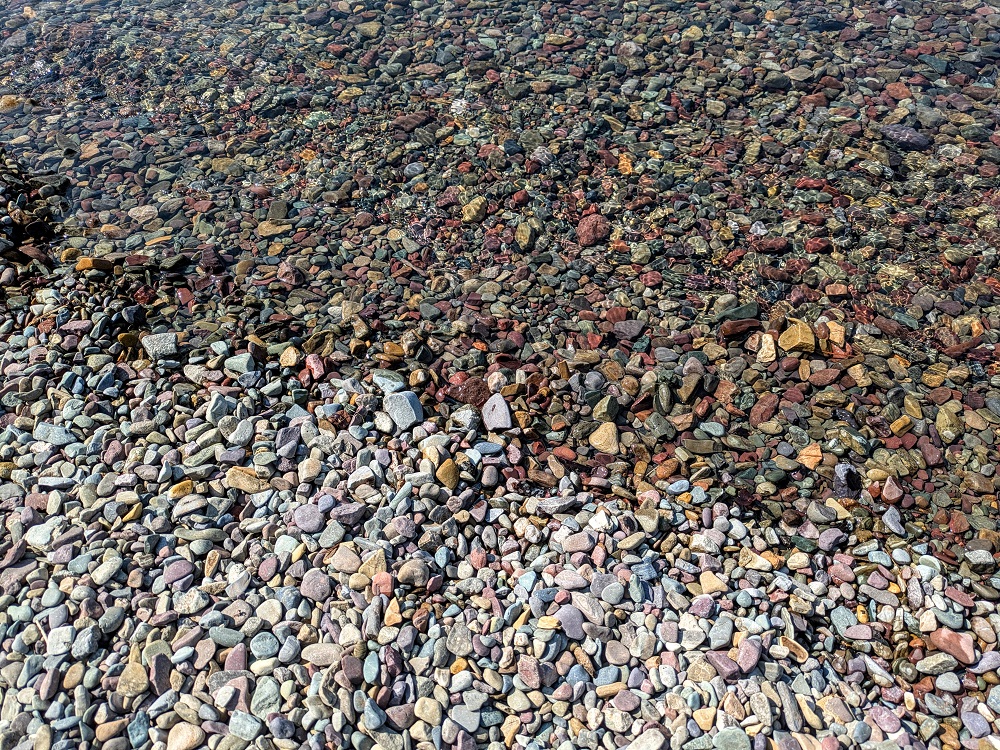
I mentioned earlier that the Going-to-the-Sun Road is about 50 miles long. Expect to spend many hours driving the road though; not only will you need to drive back along the road (or take a different route back), but you’ll also want to stop along the many, many pull-offs along the road.
For example, after driving the length of the 10 mile-long Lake McDonald, we stopped again just past the end of it at McDonald Falls. We spotted some people along McDonald Creek on the left side of the photo below; if you continue a little further up the road, Google Maps makes it look like there’s a bridge you can cross and walk back along the creek to the falls in order to get closer to them if desired.
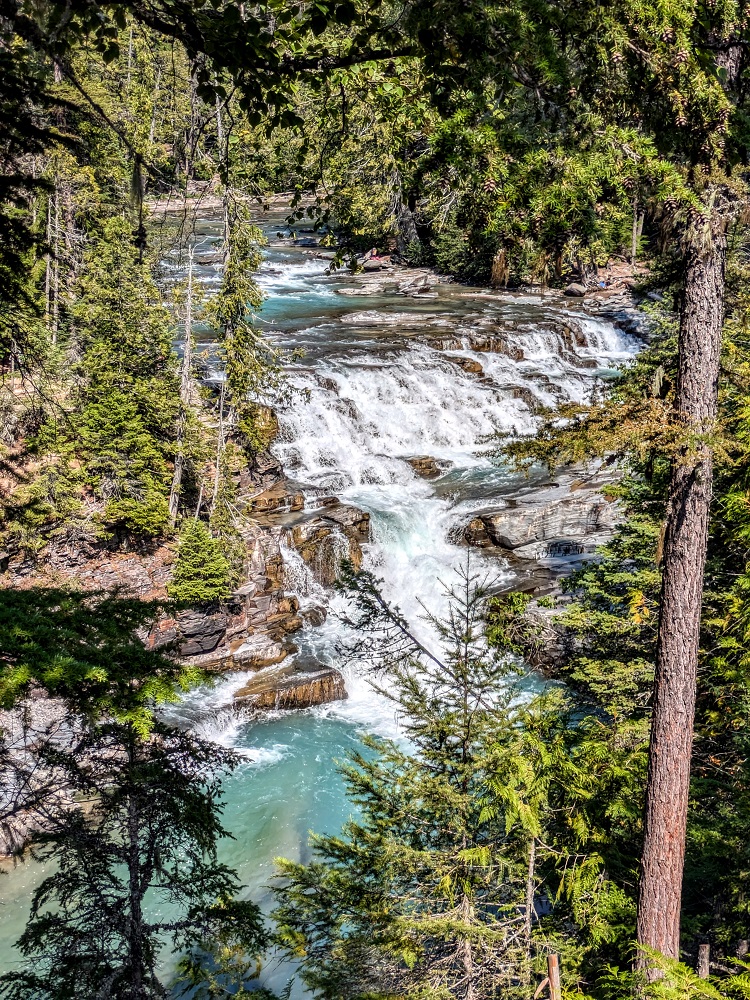
Although the road you’ll have been driving on up until this point is the Going-to-the-Sun Road, it’s a little further on that it gets truly special. The road continues round to the left and you start driving uphill into the mountains, before a switchback in the road heads you back east.
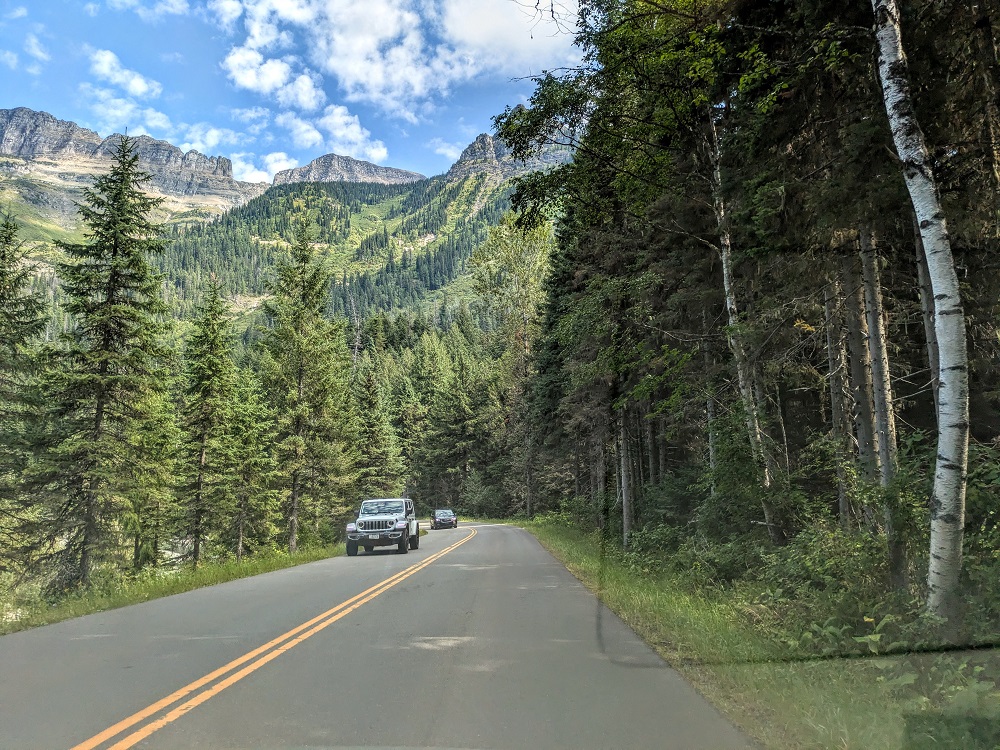
The incredible views begin shortly after the switchback now that you’re at an increased elevation.

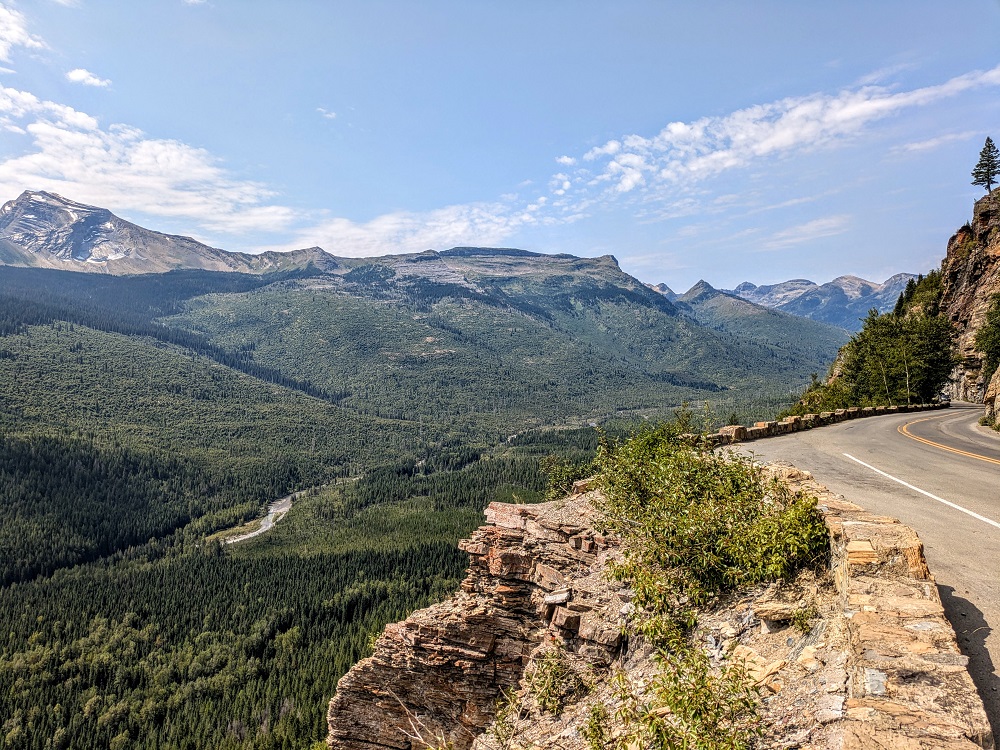
This part of the road has lots of pull-offs too. Although there’s only space for a few cars in each pull-off, we were usually able to snag a parking spot.
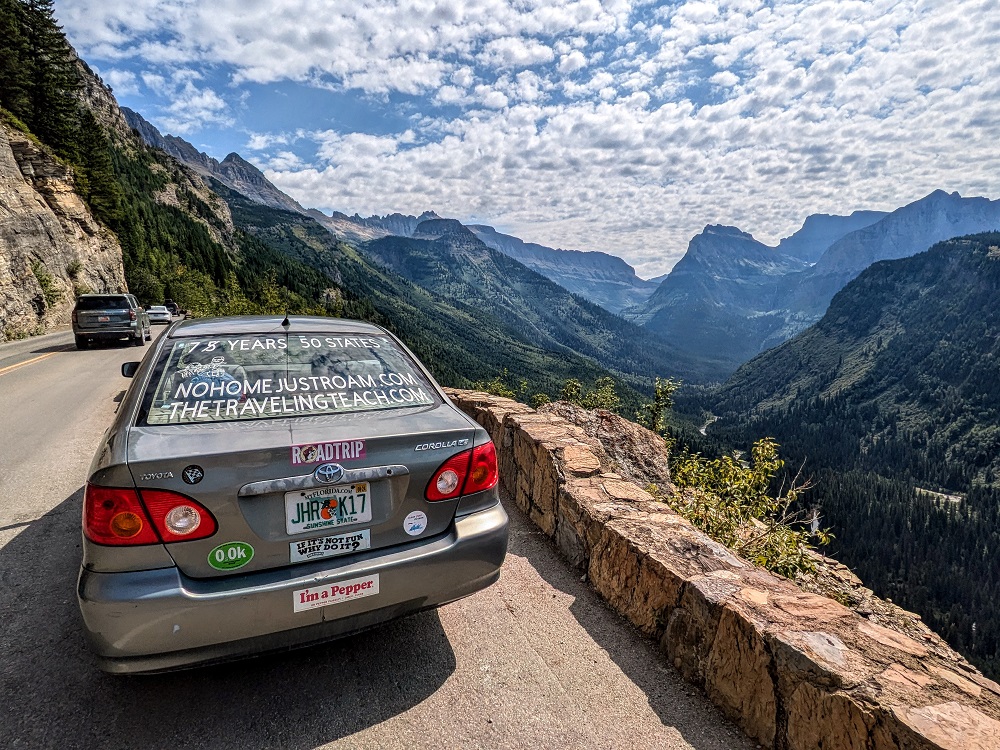
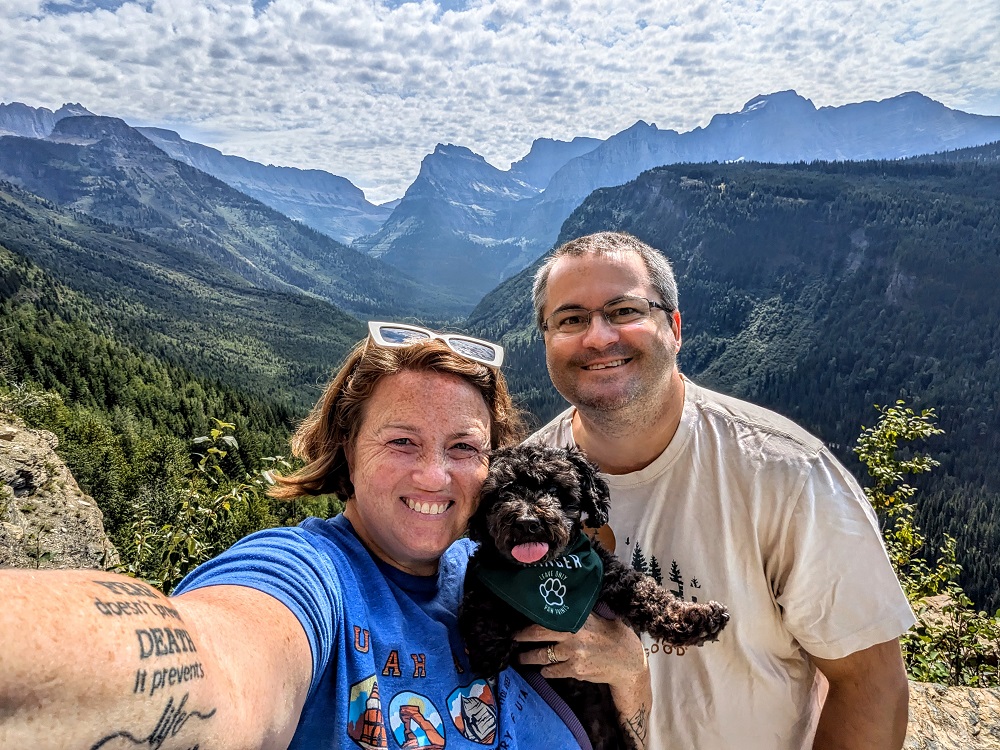
The immense views continue as you drive along the winding road.
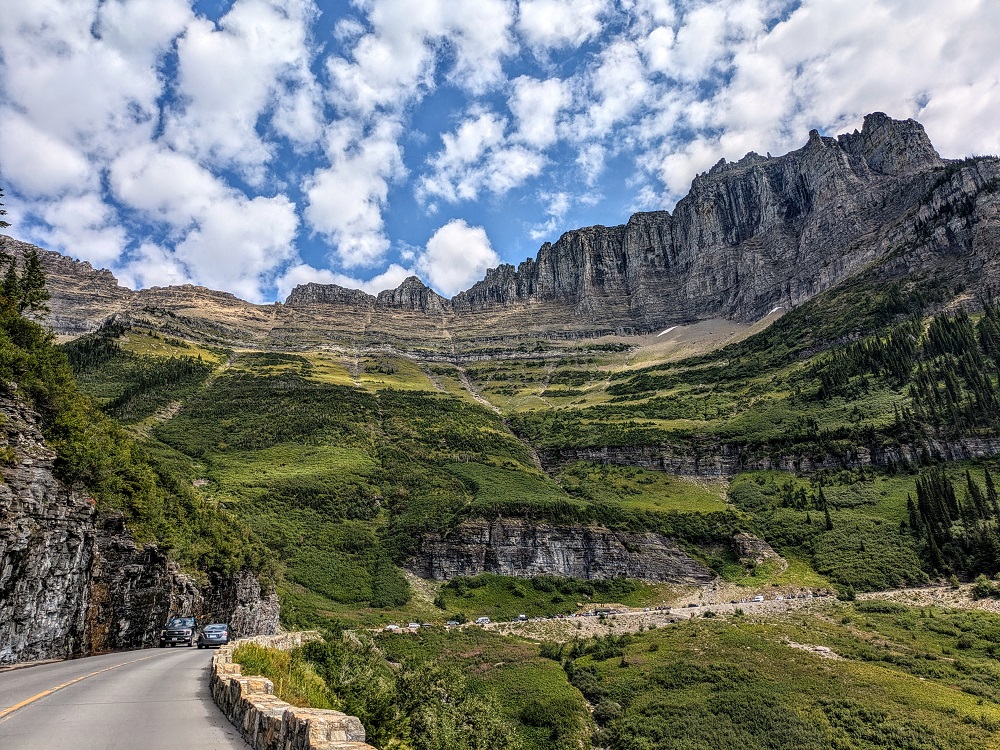
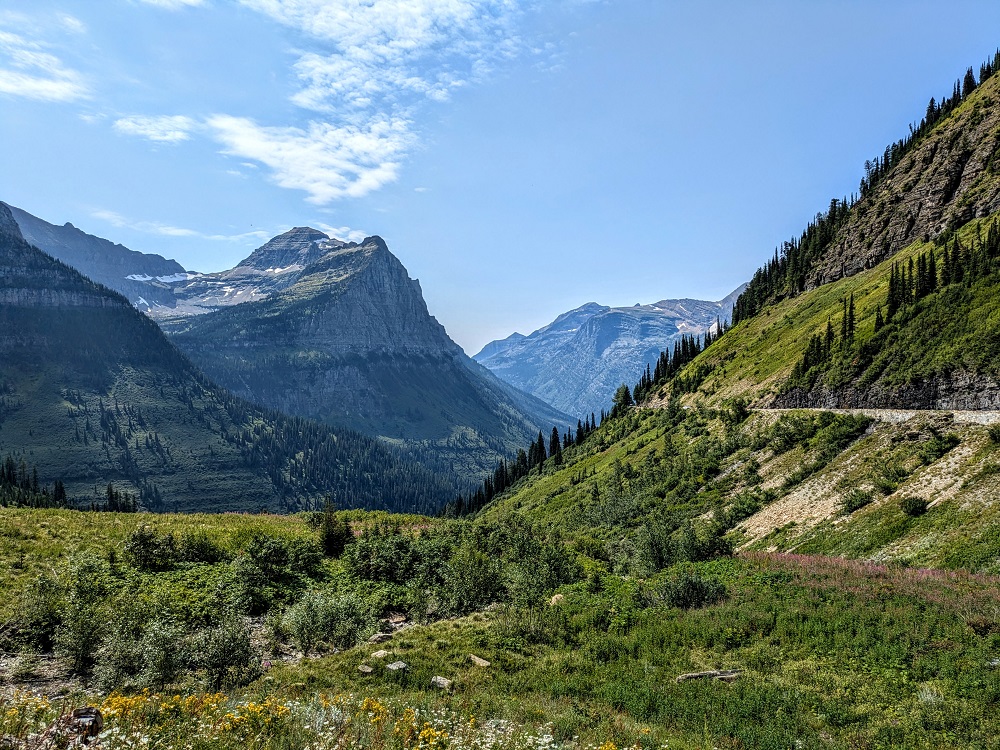
Like I said earlier, you’ll definitely want to stop frequently to take in all the different views.
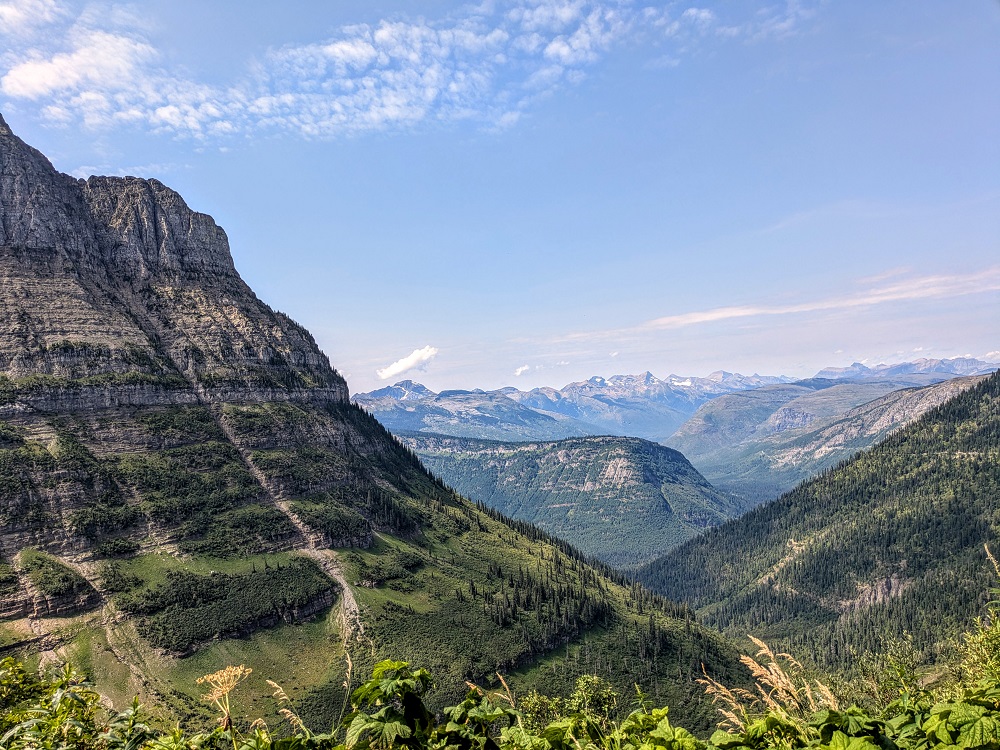
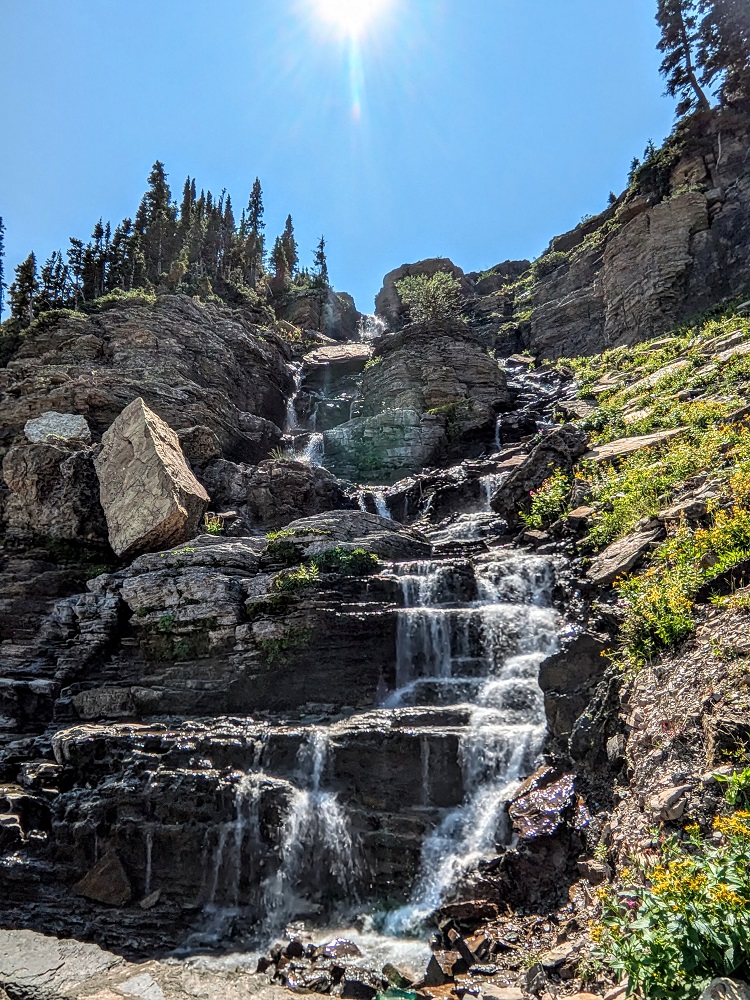
Just over halfway along the road you’ll reach the Logan Pass visitor center. Funnily enough considering it has a large parking lot, this was the hardest place along the road to find a parking spot, presumably because a lot of people park there in order to go hiking on the Hidden Lake and Highline trails.
It was so packed that I let Shae out so that she could go inside the visitor center while I drove around looking for somewhere to park.
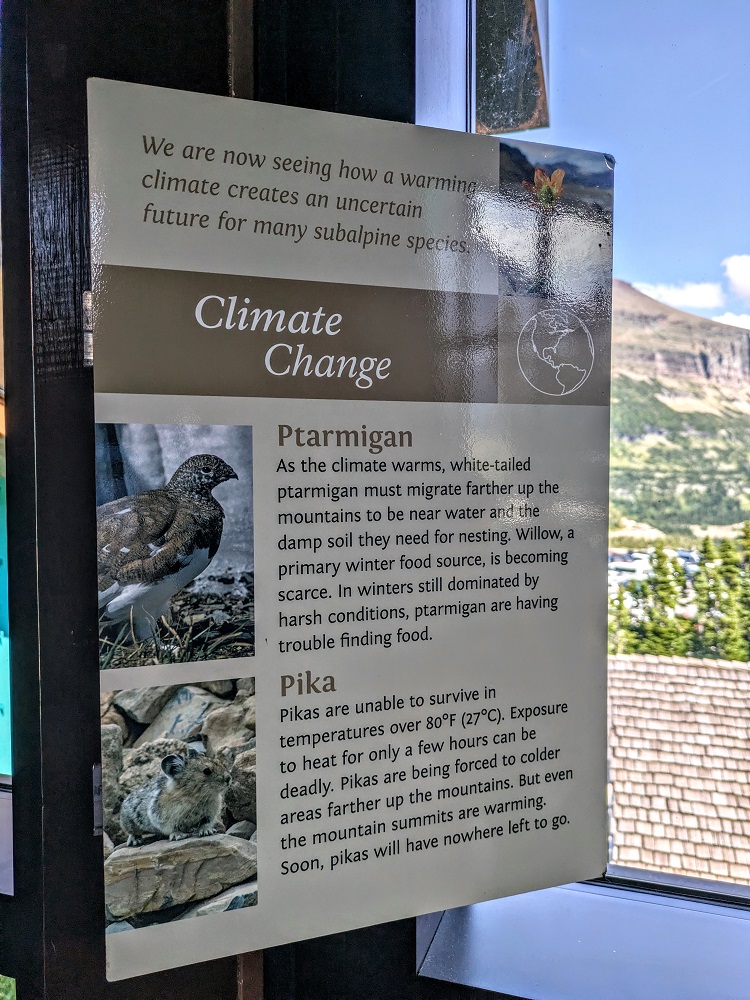
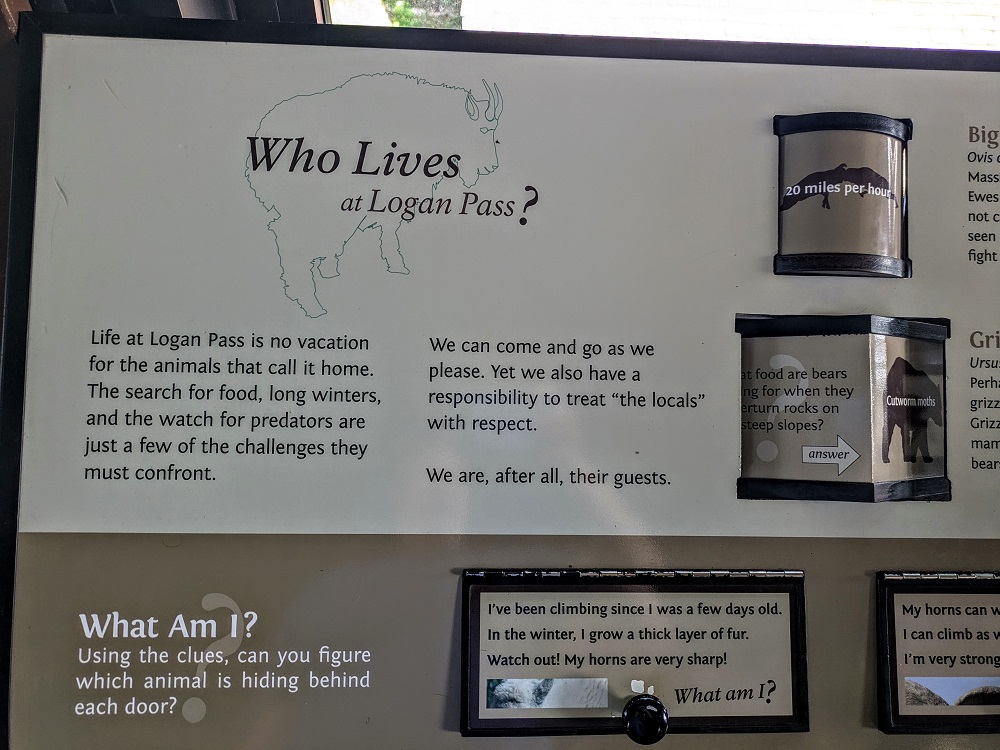
I eventually managed to find a spot, so parked up and waited outside with Truffles (dogs aren’t allowed in the visitor center). While waiting outside I noticed quite a few people, some of whom had binoculars, staring up at Clements Mountain opposite the visitor center.
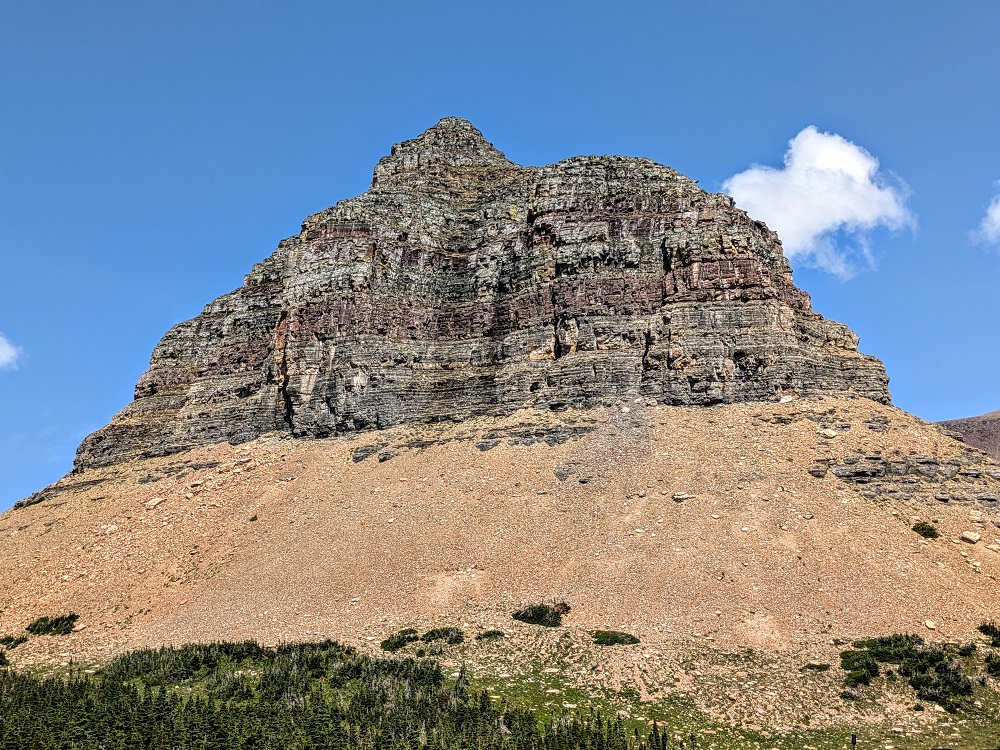
Figuring that this meant there was probably some wildlife up there, we grabbed our own binoculars from the car. It turns out that there were several bighorn sheep hanging out in the sun. Shae was able to find them easily; it took me much longer to find them, but I eventually spotted the camouflaged critters. They were so far away that the zoom on my phone couldn’t see them unassisted, so here’s a photo taken through the binoculars. Two of the bighorn sheep are more easily seen in the center of the photo, with a third one in a line down slightly to the right of the other two.
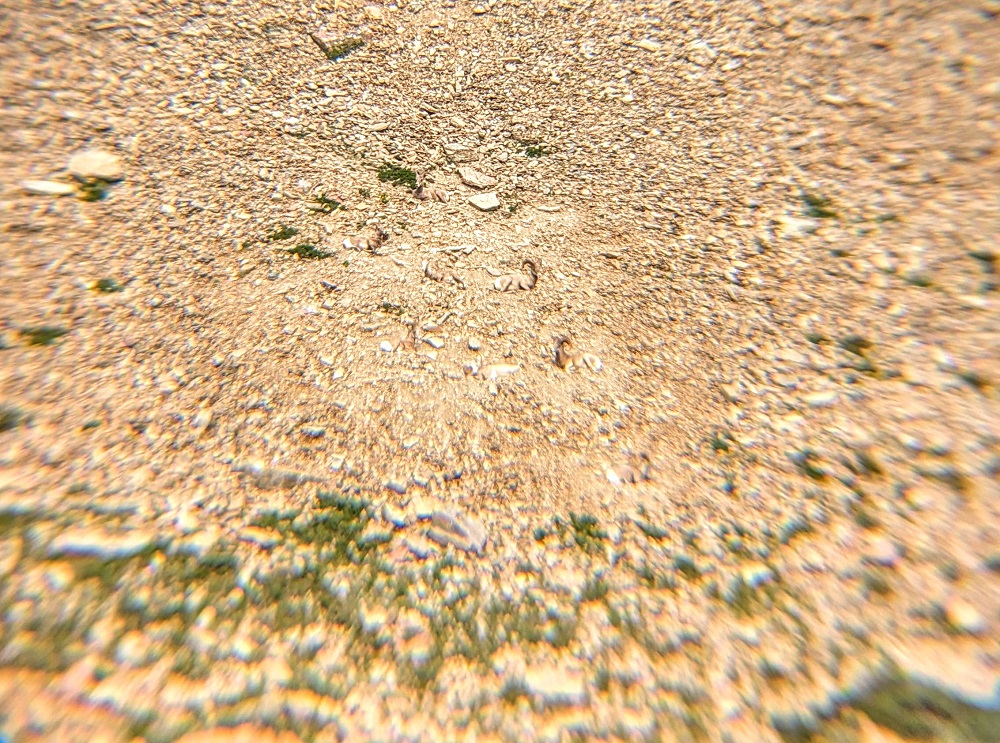
We then hopped back in the car to drive the remaining ~20 miles of the road.
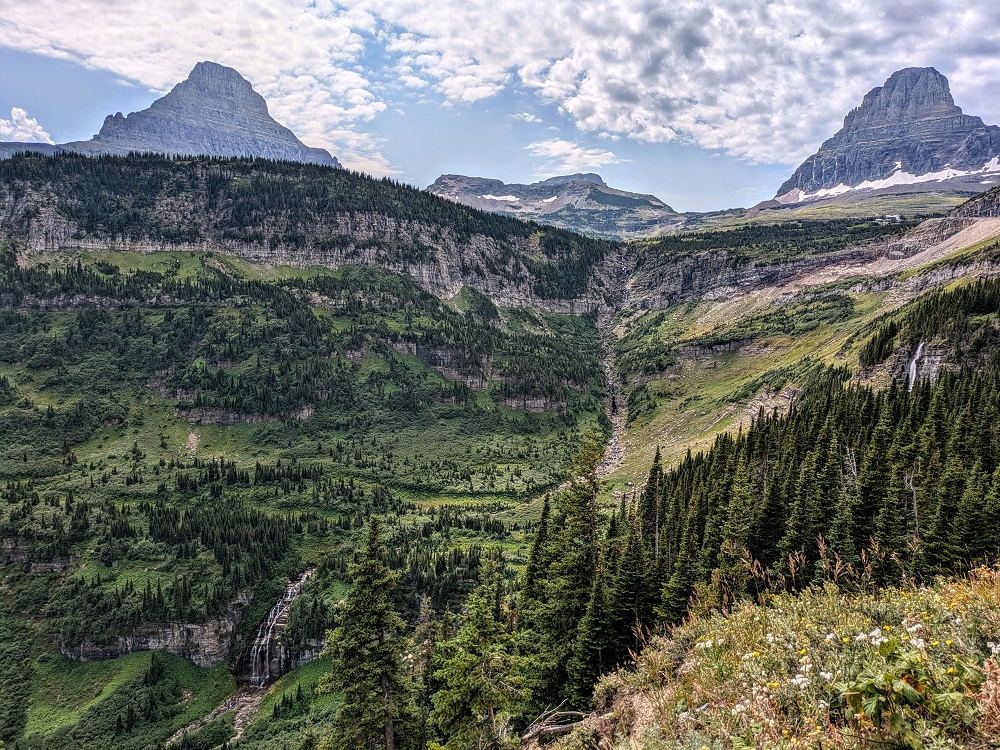
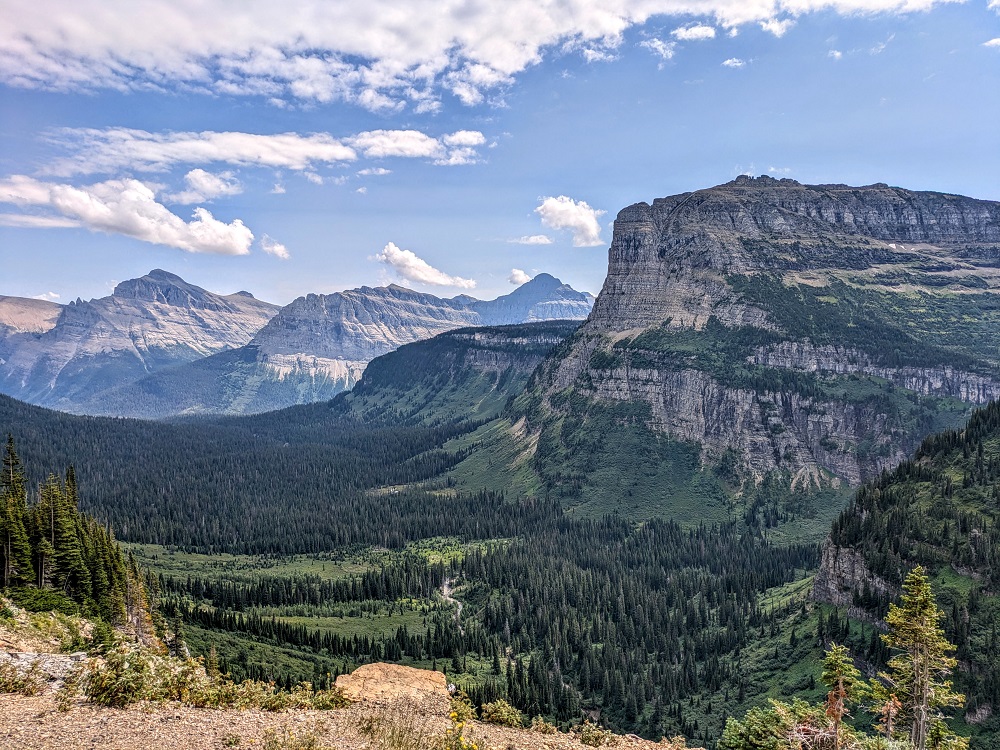
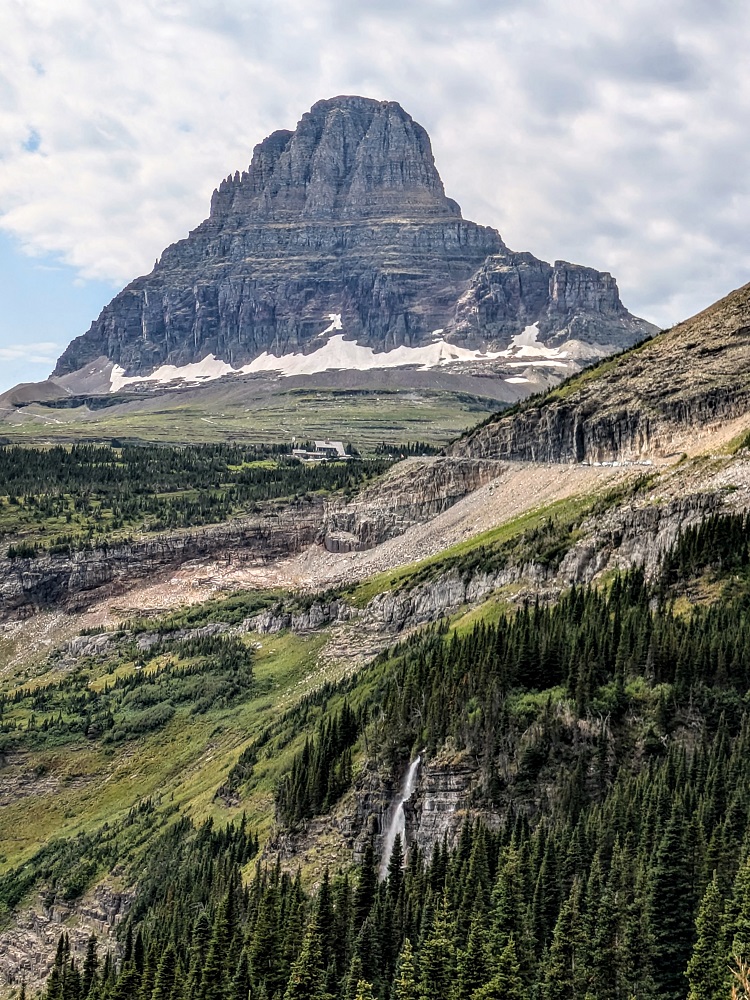
One of the 25 remaining glaciers is Jackson Glacier which you can see from the Jackson Glacier Overlook.

Although there were fewer mountain views driving east along the road after this, the beautiful views didn’t end. That’s because some of the mountains gave way to Saint Mary Lake.
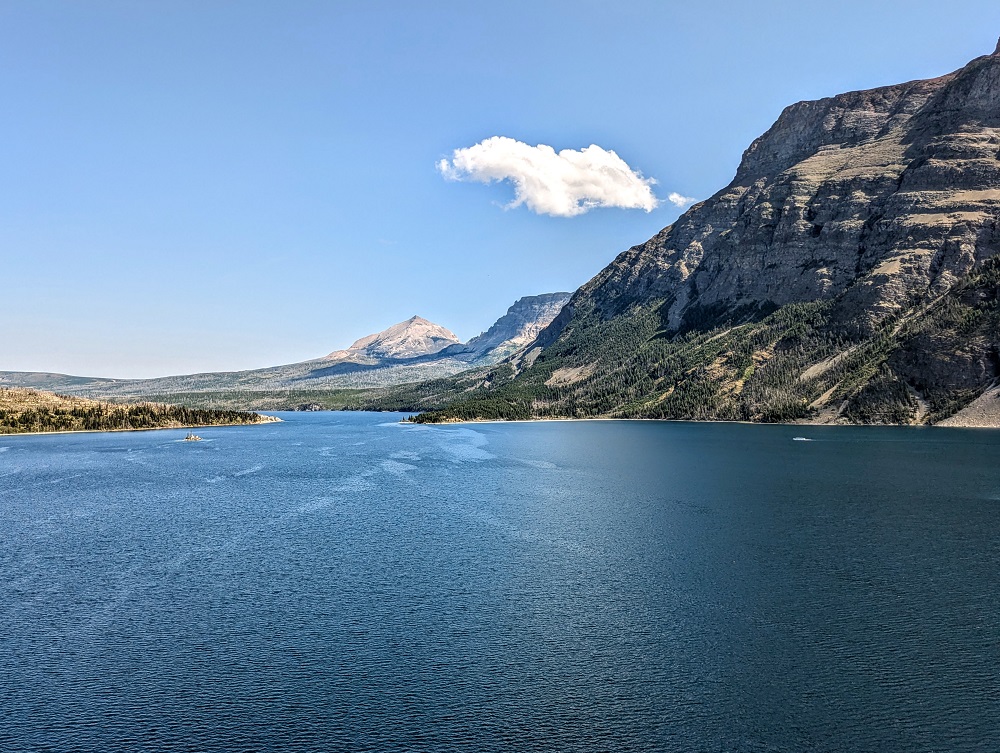
Right beneath the pull-off was a small beach area (although I don’t think it was possible to scramble down there) that looked picturesque.
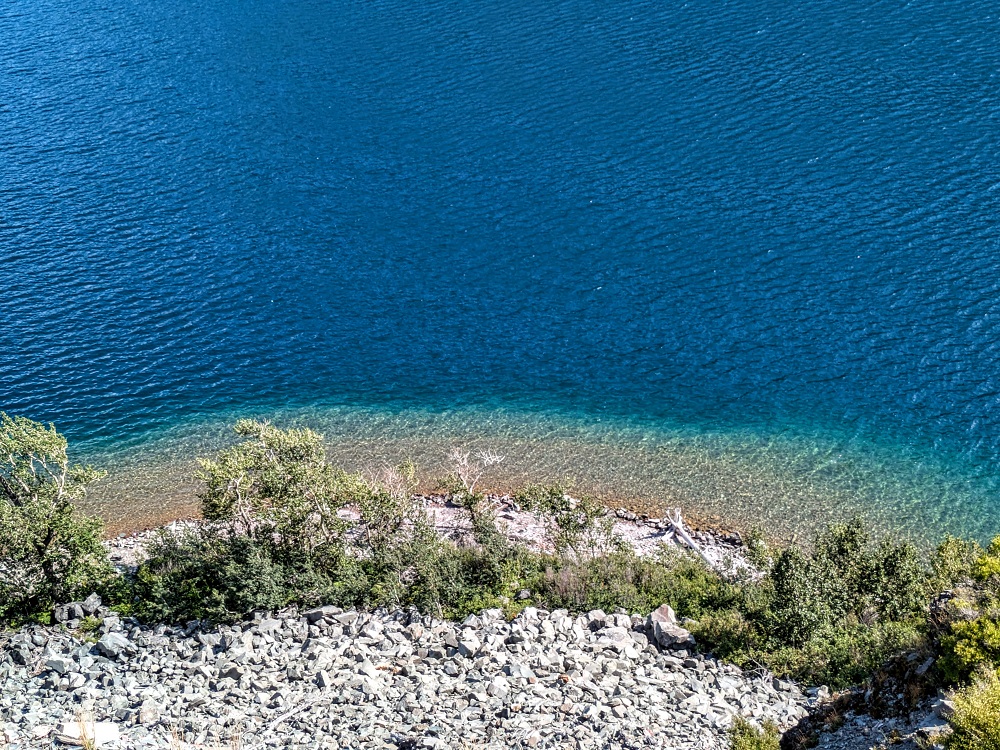
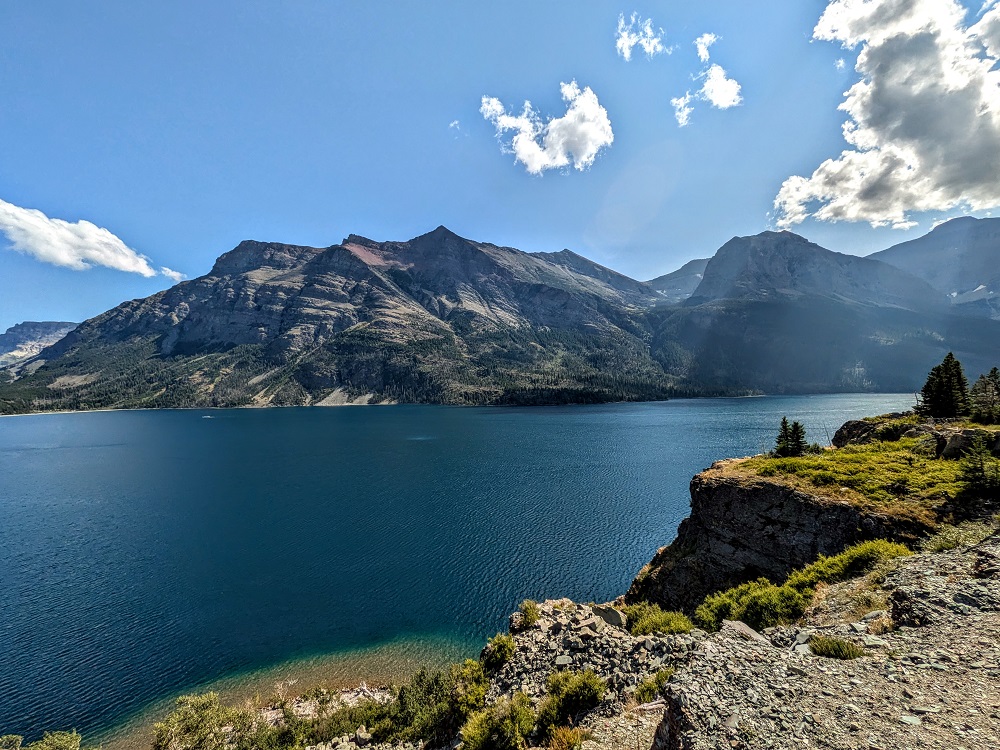
Something worth being aware of if you travel with your pup is that similar to other National Parks, Glacier National Park isn’t very dog-friendly. Dogs aren’t allowed on any hiking trails, nor in any visitor centers. Even at the Logan Pass Visitor Center, dogs aren’t allowed in the large paved area right outside the building, only on the sidewalk down by the parking lot.
Dogs are allowed to join you in your car and get out at overlooks provided they remain on the paved area though, so Truffles still got to enjoy coming along with us rather than having to stay back at the vacation rental property we’d booked in Whitefish.
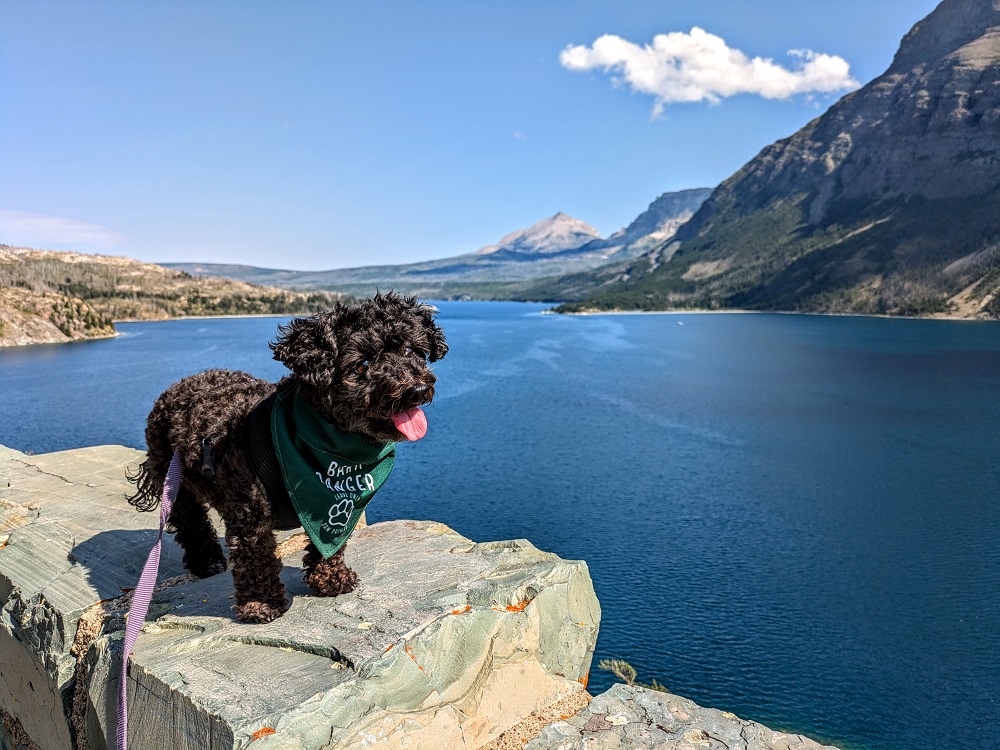
The road continued around the narrow side of the lake where we stopped to get a photo of Wild Goose Island, a tiny raised island in Saint Mary Lake.
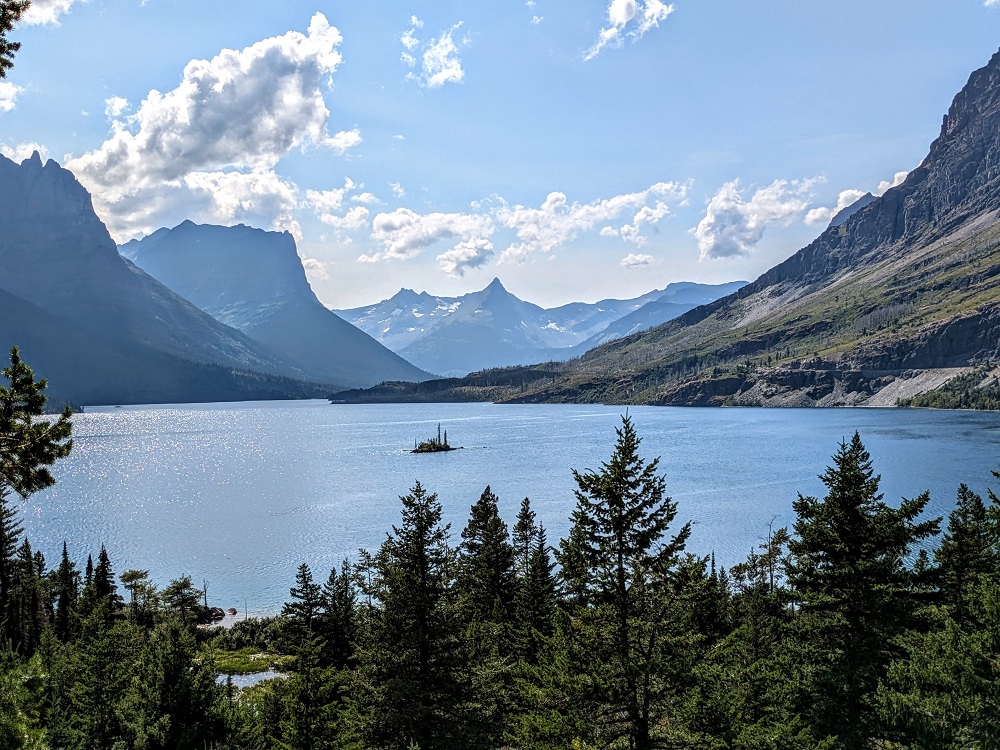
The Going-to-the-Sun Road ended at the Saint Mary visitor center which is another entrance to the National Park. With regards to the timed passes, that applies when entering from the west side of the park. If entering from the Saint Mary entrance on the eastern side of the park, I don’t think you have to have a timed pass, although I can’t guarantee that.
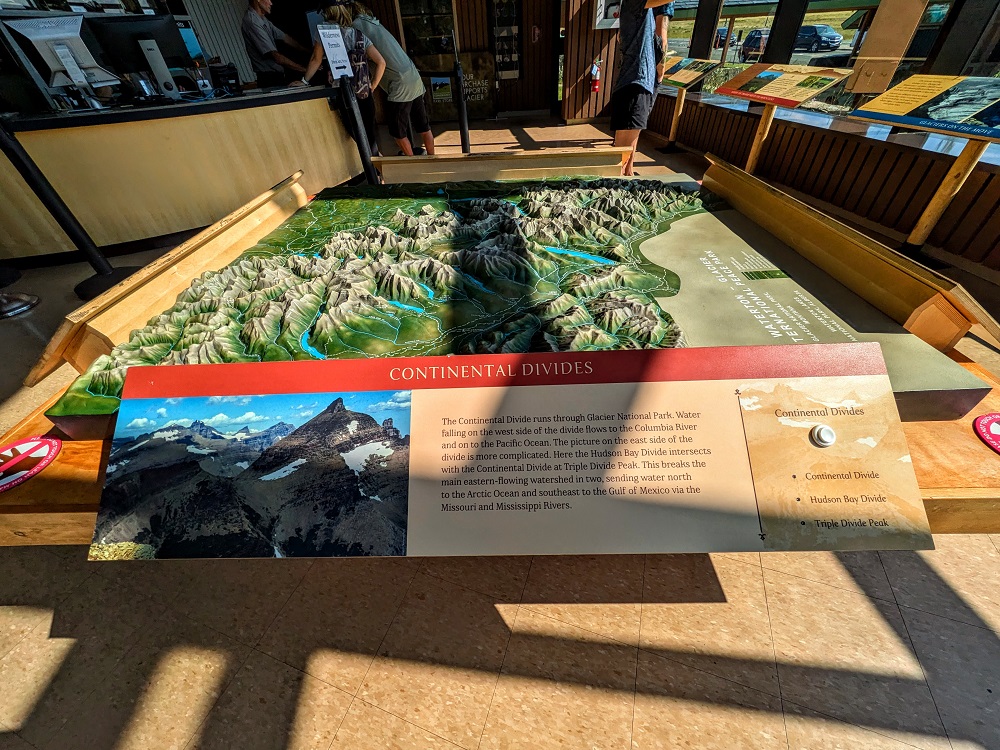
Shae went inside the visitor center while I waited outside with Truffles. There were all kinds of exhibits inside, while outside there were quite a few information boards sharing more about the park.

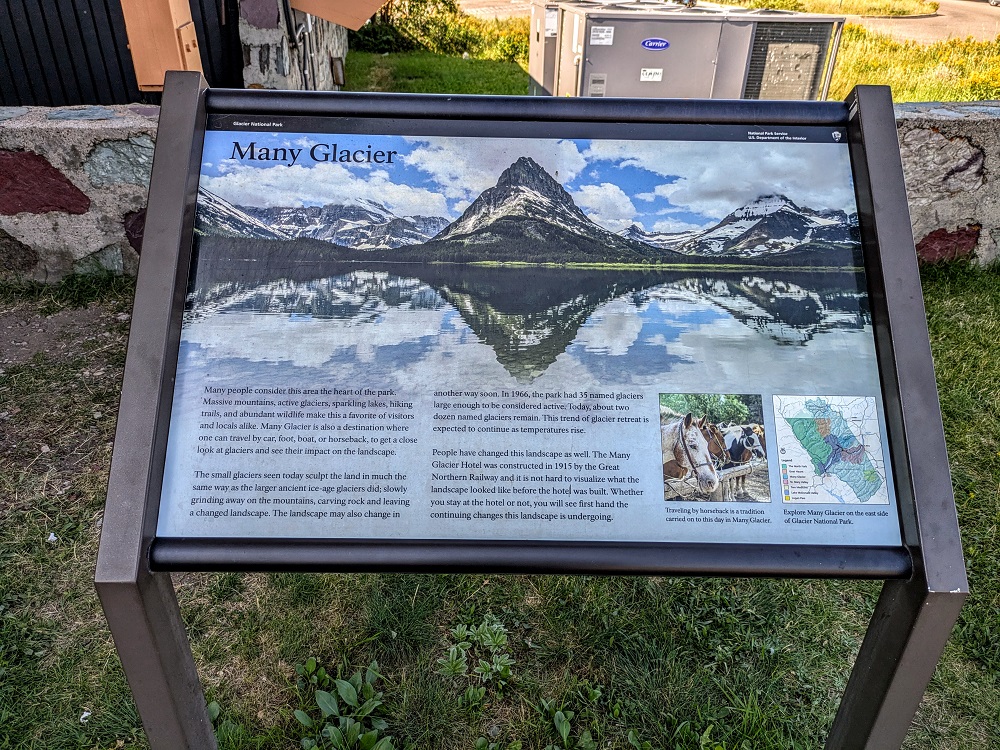
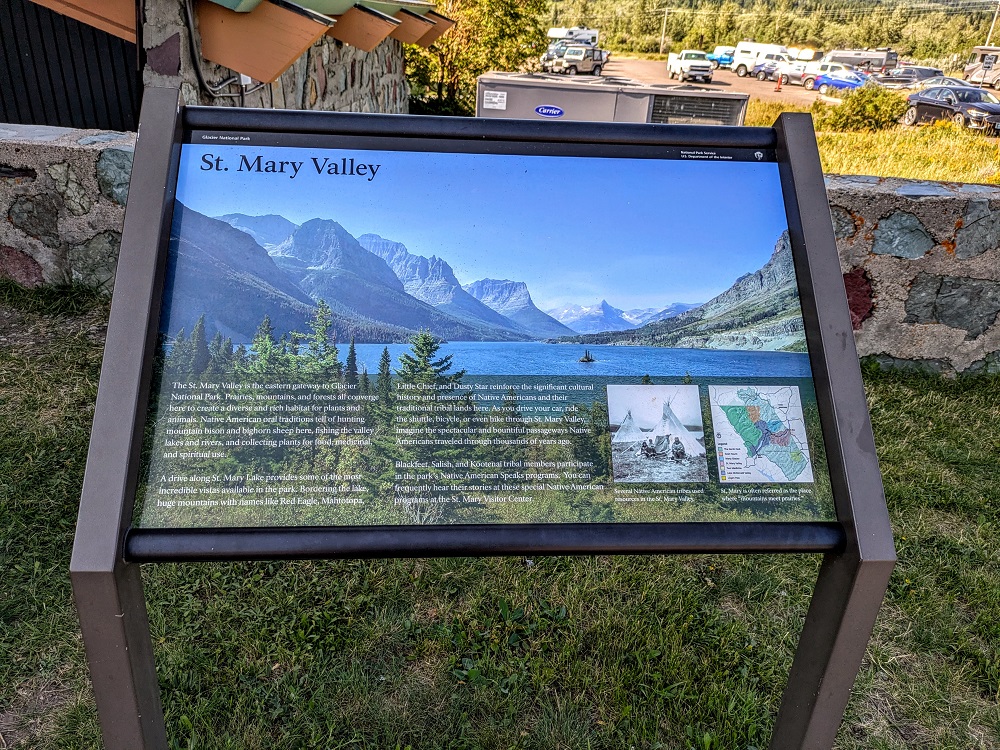
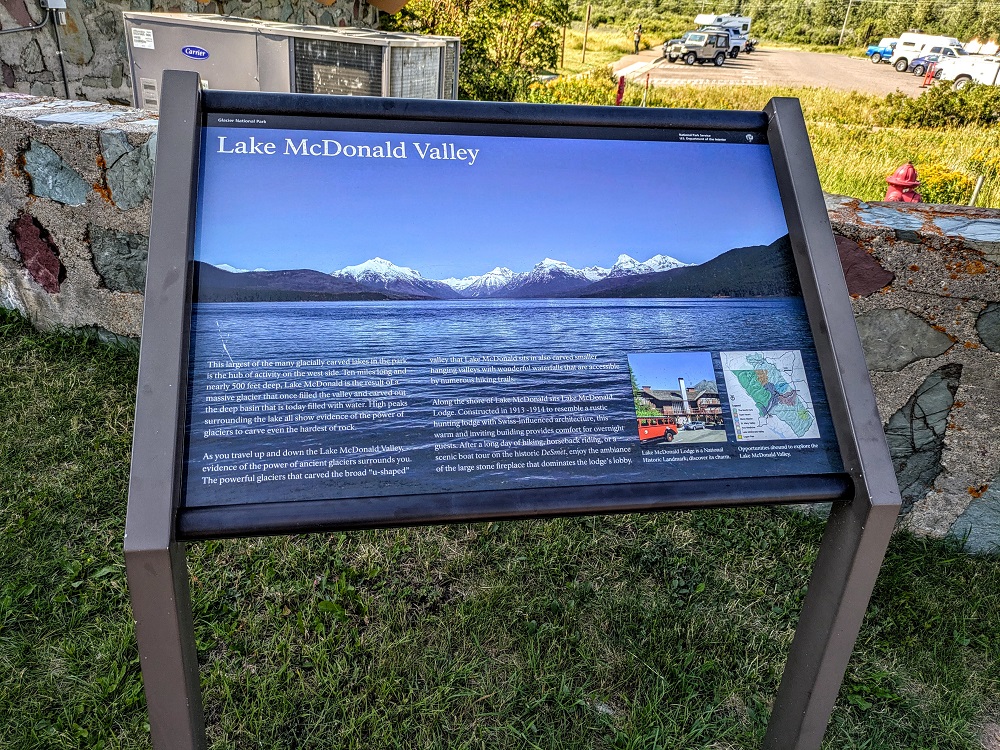
At this point we had a couple of potential routes back to Whitefish. One was to drive back along the Going-to-the-Sun Road in the other direction, while the other would have us routing down and around Glacier National Park along Rte 2. The route outside of the park was 35 miles longer, but both options were almost identical in expected driving time – about 2 hours 15 minutes – as we’d be able to drive faster along the highway on that longer route.
Shae asked inside the visitor center what the views would be like on that alternate driving route and it didn’t sound like it would be as scenic as driving back through the park, so back along the Going-to-the-Sun Road we went. That ended up being a great choice because even if you stop frequently along the pull-offs on the initial drive east and look around, you do notice even more stuff when driving back west.


Final Thoughts
If you’ll be visiting Glacier National Park, it’s definitely worth spending the 5+ hours it’ll take you to drive the road in both directions. It’s one of the most scenic drives we’ve gotten to enjoy in the US on our entire 7 year, 50 state road trip.
If you get a chance to go back sometime, the Many Glacier area was my favorite part at Glacier, by a wide margin. That said, outside the park lodging on that side is tricky, and it’s also not pet friendly so it may not be a great option with Truffles…but it’s worth doing if you can someday.
We’d definitely love to return as we were both sick most of the time we were in Whitefish. I’m not sure if you enjoy hiking; if you do, are there any specific trails we should do in that area?